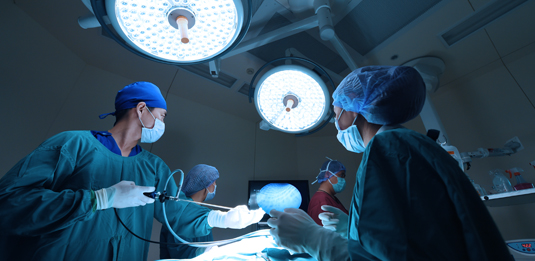Laparoscopic Surgery

During laparoscopic surgery, a 1cm thick telescope (laparoscope) is inserted into the abdominal cavity through a 1.5cm skin incision to view the abdominal organs. The image from the laparoscope is relayed to a monitor through a fibre-optic cable, from where the surgeon views the operative field. Surgical instruments are placed into the abdominal cavity through additional 1cm skin incisions, usually on either side of the laparoscope, and the operation is performed with these instruments.
Most laparoscopic operations are performed in the abdominal cavity, also known as the peritoneal cavity. This cavity is inflated with carbon dioxide to create a space, in which the specialized laparoscopic instruments can be maneuvered. Some laparoscopic operations, such as nephrectomy, can be done in the extra-peritoneal space outside of the peritoneal cavity by inflating this space with gas, thereby minimizing the risk of injury to organs such as the bowel and the liver, during the operation.
Laparoscopic operations are thought to be small operations. This is a misconception, as the procedures are the same as open surgeries, but laparoscopic surgeries are performed through smaller incisions. Essentially, it holds the same risks as open surgery and the same complications.
The advantage over open surgery is the smaller incisions which result in less postoperative pain and quicker recovery. Vision is enhanced because of the magnification the camera lens offers, thereby increasing accuracy.
Click here to Book an Appointment with Dr Naude